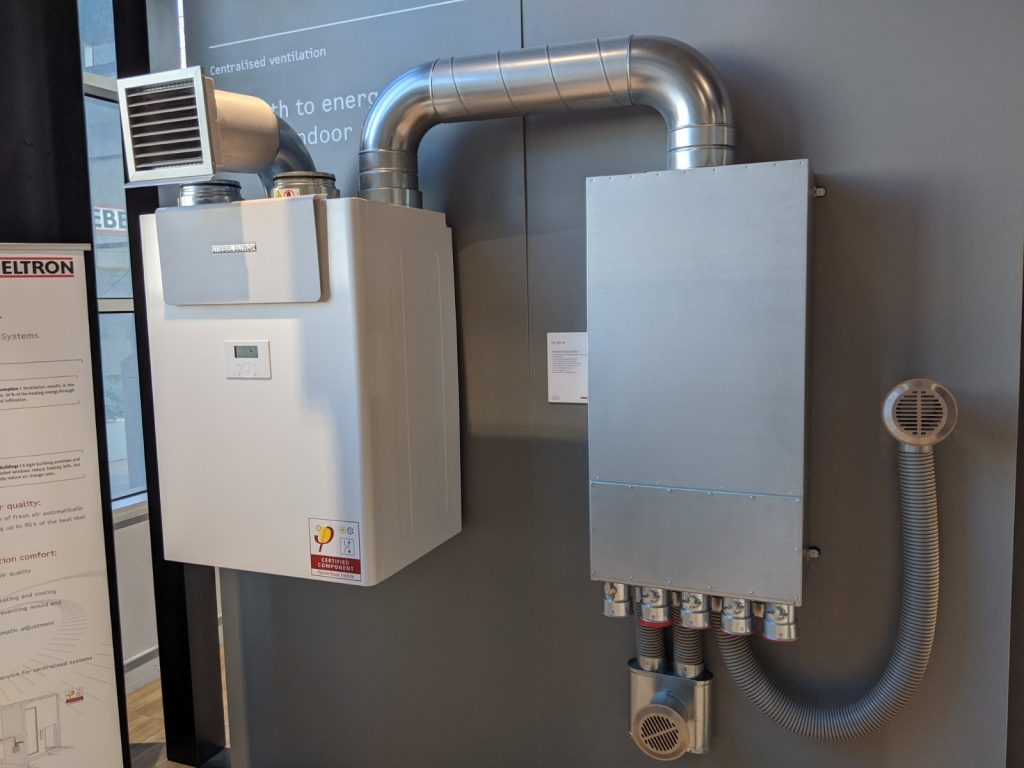How HRV Delivers a Healthier Indoor Living Environment
Wiki Article
Checking out the Benefits of Heat Recovery Ventilation for Energy Performance in Homes
Heat Recovery Ventilation (HRV) systems use property owners a sensible approach to boosting power performance. By reclaiming warm from outbound air, these systems can significantly lower heating & cooling costs. Furthermore, they give a steady supply of fresh air, boosting indoor air quality and convenience levels. As homeowners take into consideration lasting choices, recognizing the nuances of HRV systems ends up being progressively vital. What factors should one assess before making such a financial investment?Comprehending Heat Recovery Ventilation Solutions

Exactly How HRV Boosts Indoor Air Quality

Power Cost Savings: The Monetary Advantages of HRV
Optimizing power performance, heat recovery ventilation (HRV) systems use considerable monetary benefits for homeowners. By recovering and reusing heat from exhaust air, HRVs significantly lower heating & cooling costs. This technology can bring about power financial savings of as much as 30%, depending upon climate and usage patterns. Homeowners frequently notice reduced energy expenses soon after setup, making HRVs an economically smart financial investment gradually. Furthermore, several regions supply incentives or rebates for energy-efficient upgrades, even more improving the economic appeal. As power costs remain to rise, the cost-effectiveness of HRVs ends up being increasingly clear. In general, the incorporation of HRV systems not only advertises energy effectiveness yet also adds to long-term economic savings for households.The Ecological Effect of Heat Recovery Ventilation
A considerable environmental benefit of heat recovery ventilation (HRV) systems depends on their capability to decrease overall energy intake. By redeeming warm from exhaust air and moving it to inbound fresh air, HRV systems lessen the requirement for energy-intensive heating and cooling approaches. This reduction in power need adds to lower greenhouse gas emissions, as much less fossil gas is called for to maintain comfortable interior temperatures. In addition, HRV systems boost this hyperlink indoor air quality by effectively trading stagnant air with fresh outdoor air, minimizing dependence on mechanical air conditioning systems that can damage the environment. In general, the application of HRV systems supports lasting living methods and lines up with international initiatives to battle environment change by promoting energy effectiveness in residential settings.
Choosing the Right HRV System for Your Home
How can homeowners ensure they select the right heat recovery ventilation (HRV) system for their needs? Initially, they ought to analyze their home's dimension and layout, as these elements affect airflow requirements. Next off, evaluating the system's performance scores is important, as greater ratings suggest far better performance and energy financial savings. House owners should additionally think about installation and upkeep costs, contrasting different brand names and designs for worth. Additionally, it's important to review sound levels, as some systems run even more silently than others. Consulting with heating and cooling specialists can offer tailored suggestions based upon particular home problems. Taking a look at individual testimonials and guarantees can aid in making a notified choice, making certain that the chosen HRV system effectively improves interior air quality and energy performance.Regularly Asked Concerns

How Usually Should I Clean or Keep My HRV System?
The frequency of cleansing or preserving a warm recovery air flow (HRV) system generally relies on usage and environmental factors. Normally, it is a good idea to execute upkeep every 6 months to assure peak performance and air high quality.
Can HRV Systems Aid Reduce Moisture Degrees Indoors?
HRV systems can efficiently decrease interior humidity degrees by exchanging stale, damp air with fresh, drier air from outside. HRV Heat Recovery Ventilation. This process assists maintain a balanced indoor environment, boosting convenience and protecting against moisture-related issues
What Is the Lifespan of a Typical HRV System?
The lifespan of a typical heat recovery ventilation (HRV) system varies, generally lasting between 10 to 15 years. Regular maintenance can expand its efficiency and functional life, guaranteeing peak performance throughout its use period.Are There Any Kind Of Noise Worry About HRV Systems?
Noise worries with HRV systems can arise, particularly from fan operation. Numerous modern units are made to lessen sound levels, guaranteeing they operate quietly while maintaining efficiency, which addresses potential disruptions in living settings.Can I Set Up an HRV System Myself, or Do I Need a Professional?
The click site individual contemplated whether to mount the heat recovery ventilation (HRV) system directly or employ a professional. Generally, while do it yourself installation is feasible, expertise guarantees appropriate performance and conformity with my link regional building regulations, boosting system efficiency.Report this wiki page